
The plump and fragrant peaches of Soja City, Okayama Prefecture - what is the secret to their deliciousness?
Okayama Prefecture is blessed with the climate of the Seto Inland Sea, and is known as one of the fruit-producing areas of Japan. Among them, peach cultivation thrives, and through stages of technological development, many varieties have been born. Although it was late in developing as a producer within the prefecture, “Soja Peach Producer Cooperative” has attracted attention from Japan and abroad in recent years. Young producers are rising to the challenge of producing high-quality peaches, and are actively involved in their export to Asia and the Middle East, too. Director of the cooperative, Mr. Yotaro Akiyama talked about his passion and fastidiousness for growing peaches.

Since Soja City, located in central-southern Okayama, has a gentle and stable climate with few natural disasters, it is ideal land for peach cultivation.
Large, round fruit with fragrance, their dense flesh is sweet and juicy. Japanese peaches, also highly acclaimed overseas, are a gift of the tireless passion and effort of the producers. Soil preparation, pruning and fruit-picking are part of the series of elaborate tasks that are essential to producing delicious peaches. Okayama Prefecture, one of the leading producing areas in Japan, is where the Hakuto, white peach with its elegant white skin and luxuriant sweetness was born. Although we talk about the white peach, there are in fact many different varieties.
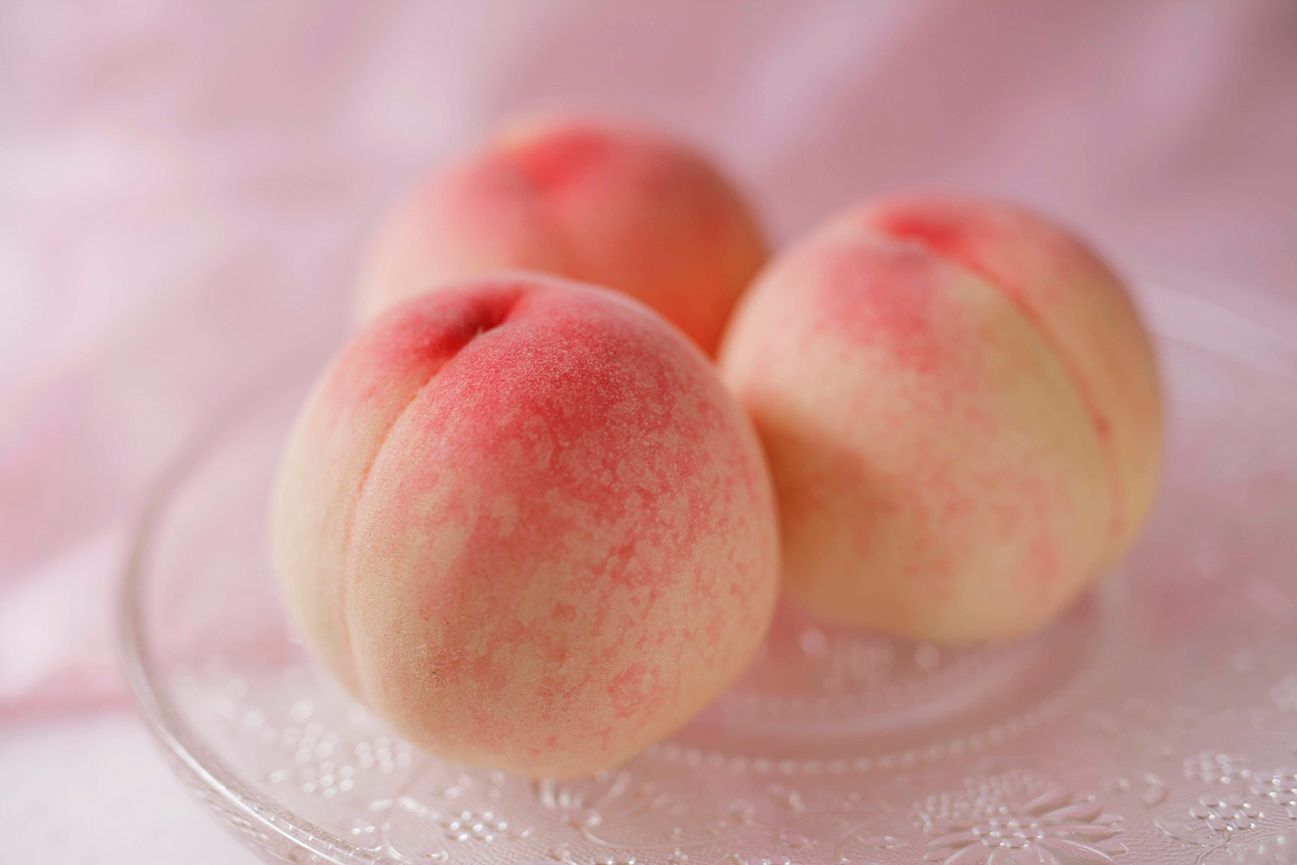
It is said that peaches originated in China. They began to spread as a food item in Japan around 150 years ago, and since the white peach, said to be the original peach of Japan, was born in Okayama, many varieties have been formed, including Hakuho and Kawanakajima-hakuto. Photos supplied by: Soja Peach Producer Cooperative
“We grow as many as 40 different varieties. Generally, the height of the shipping season is summer, but harvesting stretches from early June through the end of November. Growing many varieties over a long season means you can enjoy peaches with different characteristics, at the same time as distributing the risk for producers”.
Explains Mr. Yotaro Akiyama, currently appointed director of the “Soja Peach Producer Cooperative” formed of farmers specializing in peaches. The cooperative was formed over 50 years ago, and as a result of its continued challenge to grow the best peaches, the deliciousness of Soja peaches is now known all over Japan. Attracted by positive aspects such as improvement of skills and gains of new know-how, young people aiming at new employment in agriculture from inside and outside the prefecture have apparently increased in number.
“Soja was late to develop as a peach-producing area in Okayama, and our scale is small. For that very reason, our policy from when the cooperative was formed has been to compete through high quality rather than production quantity or price.
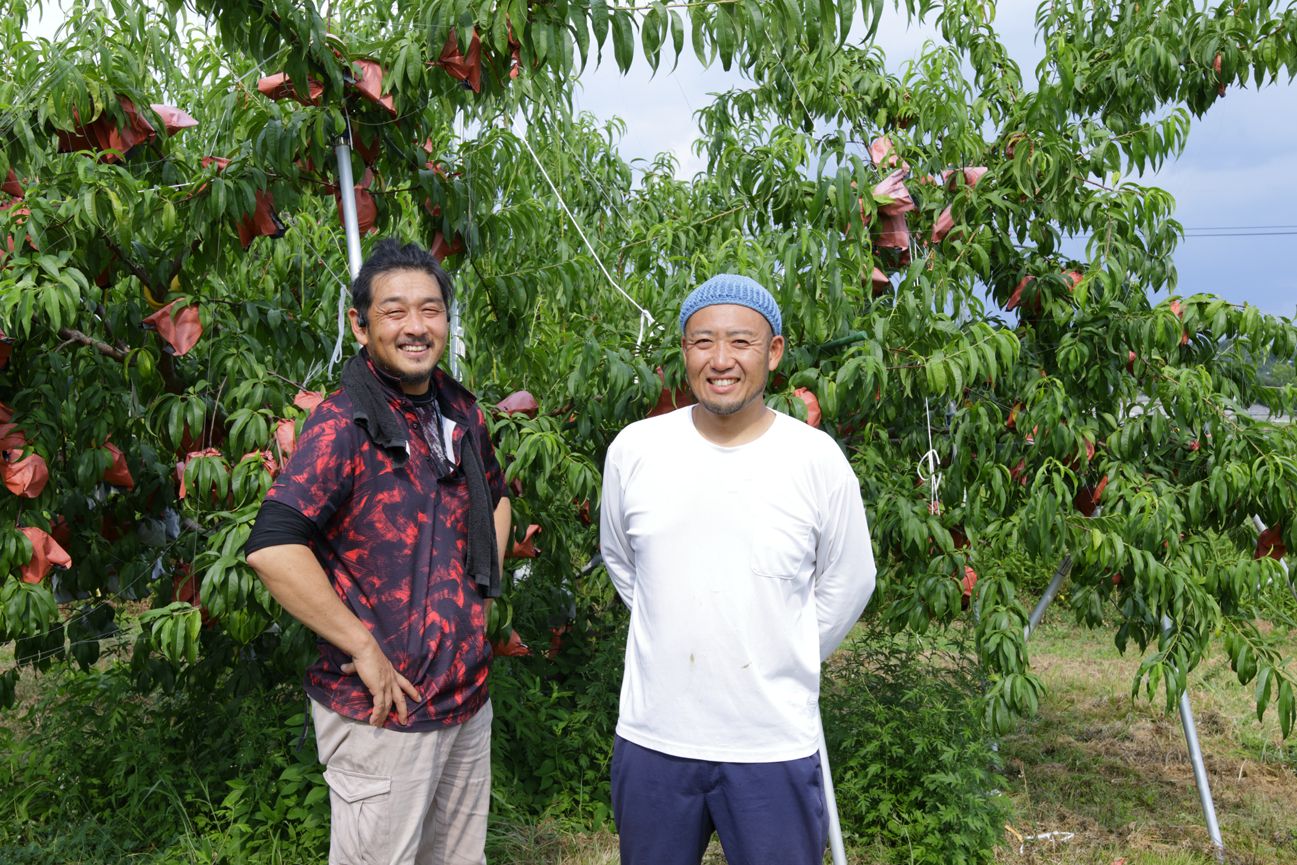
Mr. Akiyama (left) and fellow producer, Mr. Shin Hasegawa (right). Mr. Hasegawa comes from Mie Prefecture and is in his third year of working in agriculture. “I am still learning, but the joy is special when I create a delicious peach”, he says.
Mid August, when this meeting took place, was the particular harvest-time rush for many varieties, including “Hakurei”, “Yuzora” and “Sachiakane”. A tour around one orchard revealed many peaches wrapped in bags on trees, and young, green grass growing luxuriantly around the trees.
“Peach trees don’t like excessive moisture, so we adjust water levels by getting grass to absorb it. Repeated growing and withering of grass roots helps to soften the soil”.
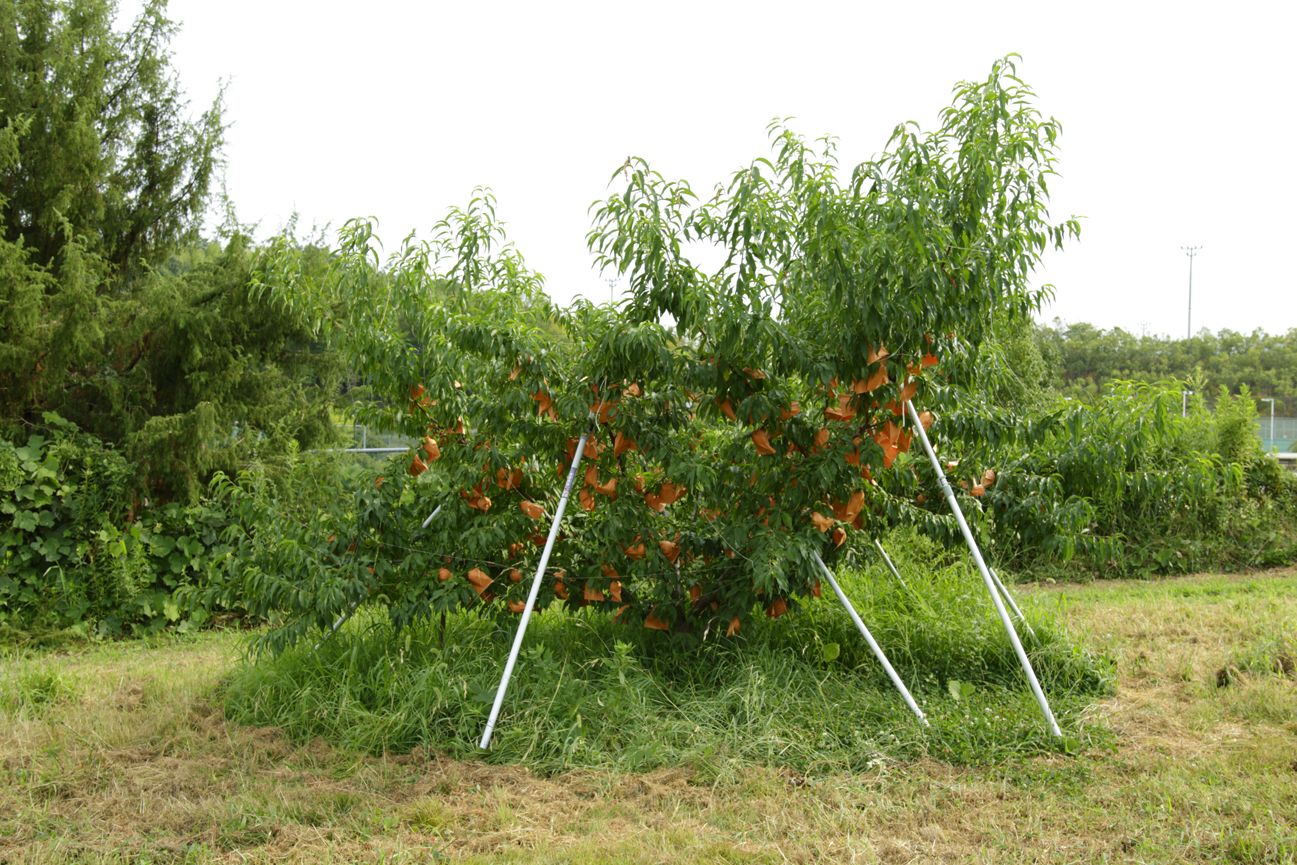
Peach trees, as if protected by the grass. Wrapping the white peaches in bags prevents damage and splitting, giving them a beautiful white skin. Since characteristics differ by variety of peach, there are apparently various types of bags, too.
The special attention given to their cultivation, which also includes using minimum fertilizer and respecting their natural growth by giving light pruning, aims to “bring out the peach trees’ own strength to the maximum”. Over-fertilizing and over-pruning in fact encourages the over-growth of branches and leaves which means the sun cannot reach under the tree, leading to irregularities in the fruit. He says that with light pruning, branches and leaves stop growing naturally, and delicious fruit form uniformly even under the tree where the sun can successfully reach.
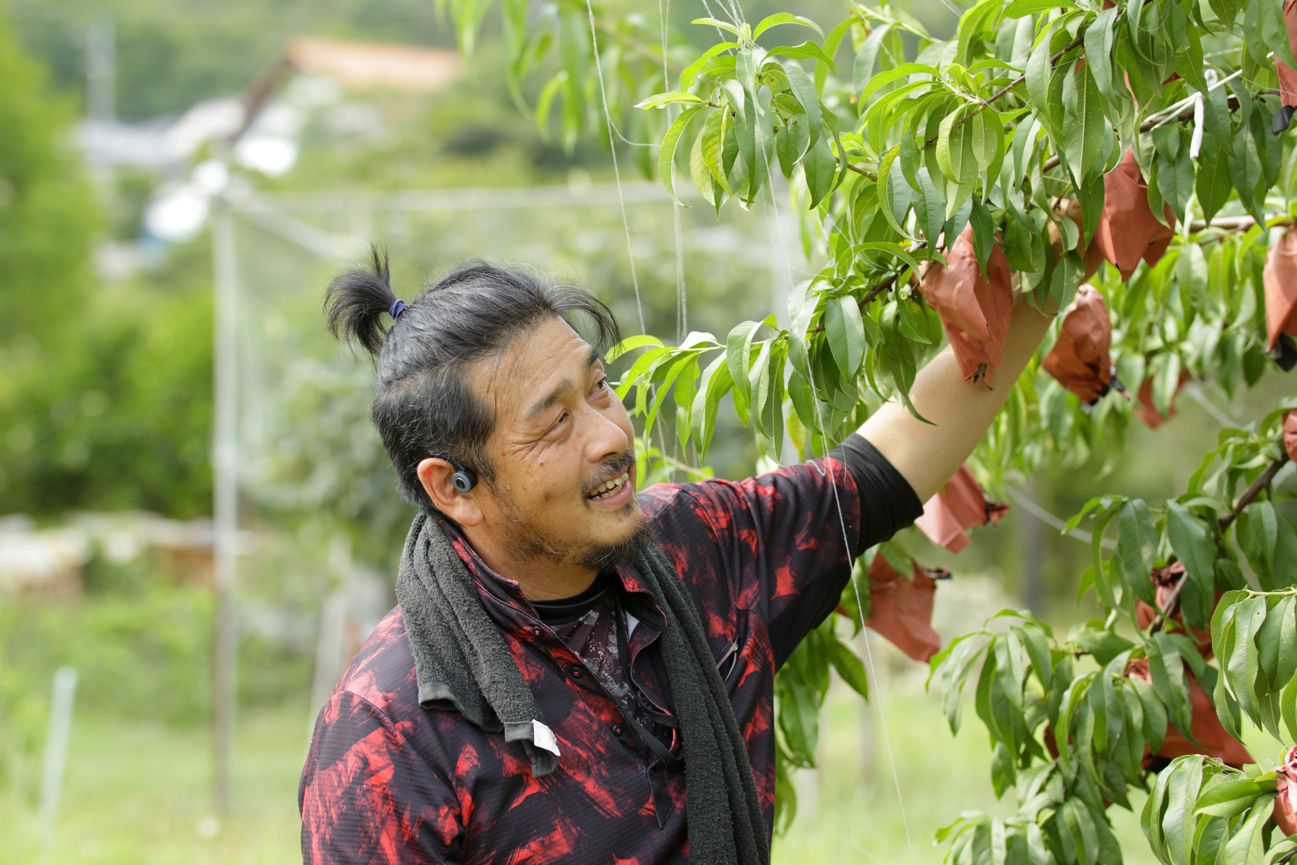
To prevent damage from birds, the peach trees are enveloped with many layers of fine thread. They dislike bumping their wings into it, and the effect is absolute. Mr. Akiyama’s face gleams at the sight of safely growing peaches.
Mr. Akiyama says that the top characteristic of Soja peaches is “allowing them to wait on the tree”. “Waiting” refers to “letting them ripen”. It is common practice to harvest peaches before they are ripe and send then to market to ripen off later, but Mr. Akiyama aims for peaches that can be enjoyed and are delicious immediately they are bought.
“How can we get people enjoying peaches at their best? We have gone through trial and error, but the answer was the method of little fertilizer and light pruning, as well as thorough ‘disbudding’, that is thinning the buds”.
In general, the process of thinning the fruit is carried out when the peach fruit are small, but in Soja, 90% are thinned out at the bud stage. Just one peach tree forms 150,000-200,000 buds, but ultimately only 1,000 remain on the tree.
“For it to flower, a huge amount of energy is needed. By initially reducing the number of buds, all that nourishment circulates and the fruit cells increase dramatically. That means the flesh grows fine and can take on sugar content. Dense flesh does not soften easily, so we let them ‘wait on the tree’ until they are at their best”.
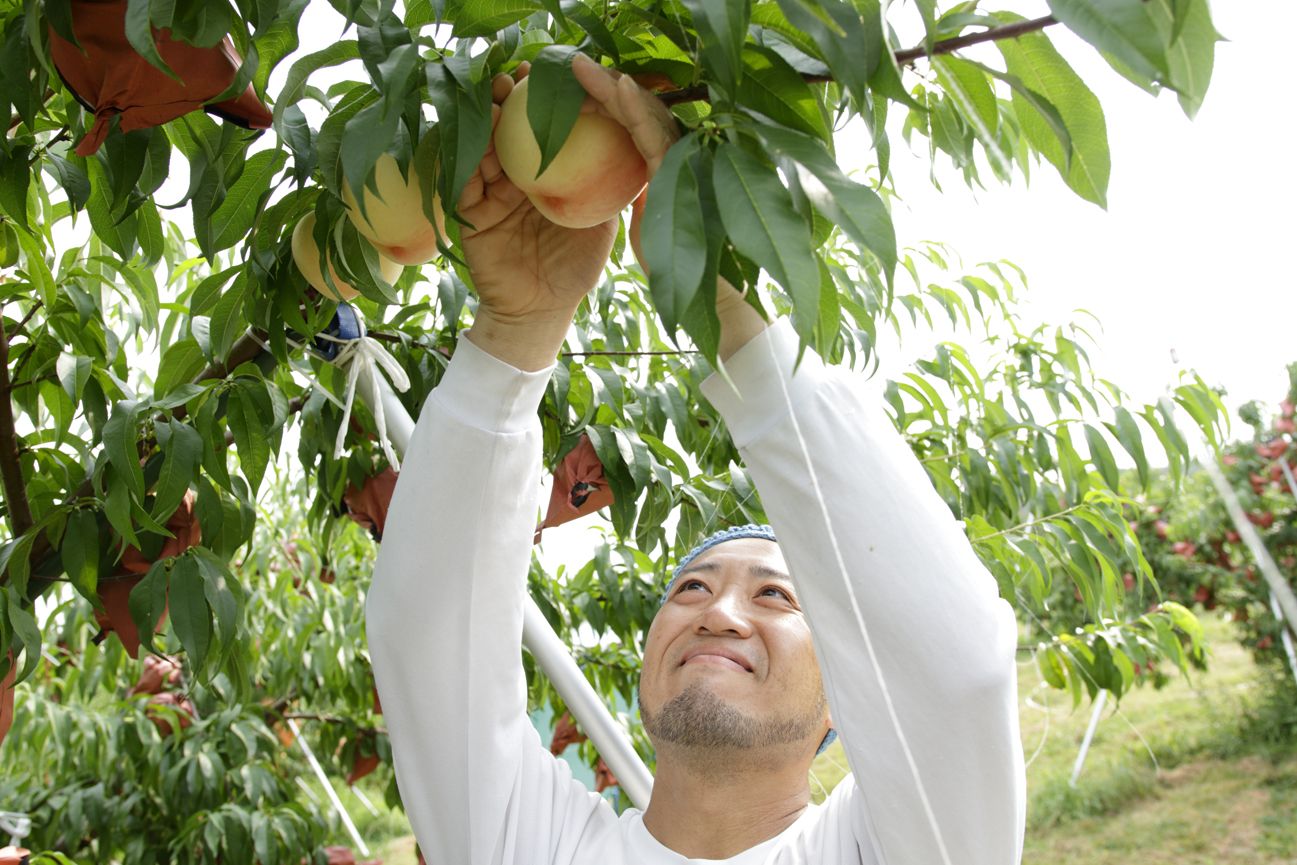
Peaches damage easily, so Mr. Hasegawa picks them gently with his hands. The variety being harvested is the cooperative original “Hidamari no uta”. Large, round fruit and exceptional sweetness are its characteristics.
Mr. Akiyama says he likes to eat them at room temperature, but he also talked about delicious ways to enjoy them for people who prefer them chilled.
“If they are over-chilled they lose their fragrance, so either submerge them in iced water for around ten minutes, or place them in the fridge for around five minutes just before serving. That way they won’t lose any flavor, and you can enjoy the bursting fragrance as you pop it in your mouth.”
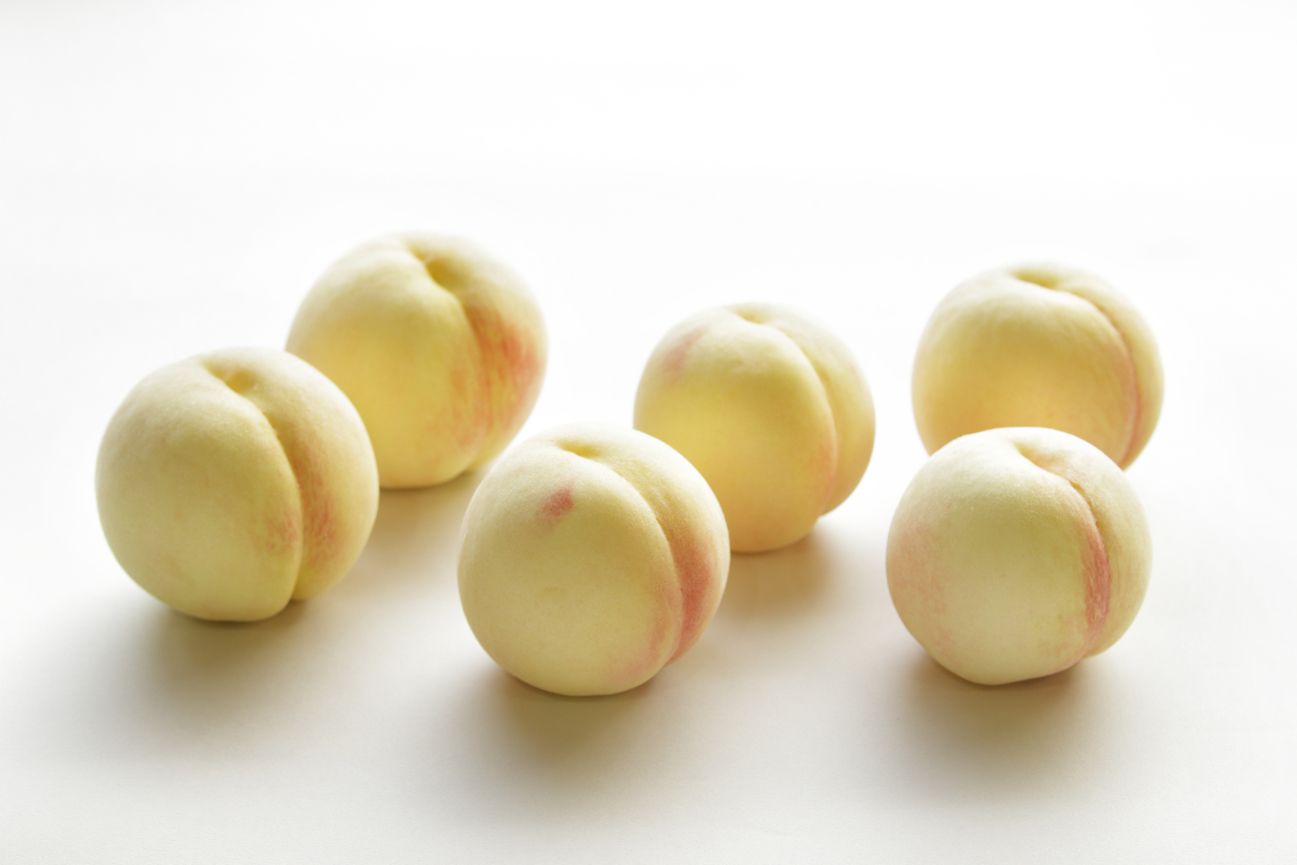
For the amateur eye it is hard to tell the difference, but from left is the very fragrant “Yuzora”, the very sweet “Hakurei” and the both very fragrant and sweet “Sachiakane”. All are varieties whose season is early to mid August.
Because they are ripened on the tree, it is Mr. Akiyama and fellow farmers’ preference not to use machinery in the sorting process after harvesting, but to carry it out by hand. Ripe peaches can be easily damaged by being passed through a machine, and also they put importance on aspects that can only be found by human hand, so both producers and sorting room staff possess high-level fruit sorting skills.
For example, if there is an irregularity in the sugar content in a single fruit, a sensor can judge its quality just from the part it has measured. By cutting and tasting a vast number of peaches everyday at the Soja fruit sorting room, they can separate them by sensing the level of ripeness and firmness, and memorize the deliciousness that people will actually experience. The skilled staff can tell just by looking and touching a peach on which orchard it was produced and by whom. This attention to detail in cultivation and certainty in fruit sorting has raised the brand value of Soja peaches.
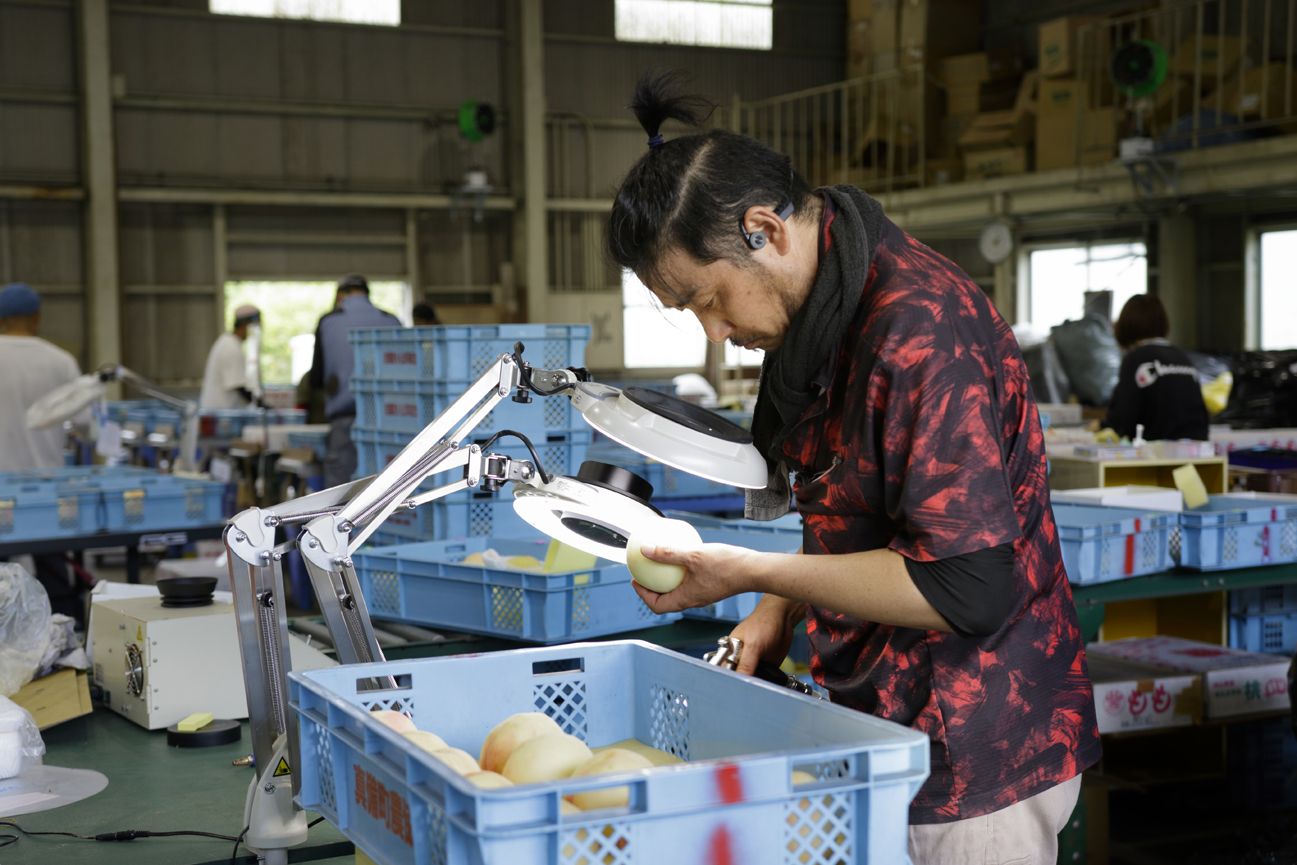
Mr. Akiyama in the fruit sorting room making final checks before shipping. Using two magnifying lenses at different magnification, not even minor damage is missed. A saccharimeter is only used secondarily.
With high acclaim overseas as well as in Japan, around 10% of the cooperative’s production is now exported.
“We started exporting seriously about ten years ago. Our trade route centered on Hong Kong, Taiwan and Singapore has steadily expanded to include places like Indonesia and the Arab Emirates. We are also exporting to the EU from last year”.
Japan-produced peaches are generally considered premium items abroad, and their demand is high as gifts. Similarly, Soja peaches are shipped in time for the Ghost Festival and Mid-Autumn Festival in the Chinese cultural sphere in particular, and are celebrated as gifts for people important to others. He says they are often served at premium resort hotels in the Middle East, and at Japanese restaurants following the Japanese food boom in the EU.
Soja carries out indirect exports through middle traders such as Ota Market in Tokyo. It received the following response from an importer in Taiwan. “In sweetness, fragrance, beauty to the eye, and so on, Japanese peaches are amazing in quality. We import peaches from various producing areas, but in particular Soja peaches have a good reputation. The fragrance is intense, and the texture, smooth. You sense very little fibrousness, and the melt-in-the-mouth sensation is irresistible. I can imagine it is hard as they are gifts with extraordinary care taken in their cultivation, but I hope they continue to be afforded that care”.

When exporting luxuriant peaches, similar materials are used as for premium wine to prevent changes in temperature and humidity as much as possible. Thick, absorptive paper is placed in the box, and they are well protected with cushioning material.
Soja Peach Producer Cooperative, with increasing members from the younger generation, and through study groups, etc., an ever-strengthening spirit to rise to the challenge together. The cultivation area, too, is steadily expanding, which will surely enhance its presence as a producing area.
Mr. Akiyama firmly states, “In the future, we will pursue deliciousness to the very end, so that Japanese peaches will be highly acclaimed in even more countries”. Japan-produced peaches born from producers brimming with passion, like those of the Soja Peach Producer Cooperative, will, no doubt, capture many more fans in Japan and abroad in the future.
Reference: Japan Fruit and Vegetables Export Promotion Council
Text: Yukiko Takase; Photography: Shin Ebisu
Soja City, Okayama Prefecture
Soja Peach Producer Cooperative
Established in 1968 with the aim to “Produce the best peaches in Japan, with high revenue and business stability”. Current members of the cooperative number 12 farming families, and the cultivation area stretches over 15.6 hectares. Small, elite group brimming with energy with an average age of 41, challenging themselves to small-scale, yet better quality peach production actively using new skills and know-how. Highly acclaimed overseas, too, exports to Asia, the Middle East, the EU, etc. show expansion year on year.






